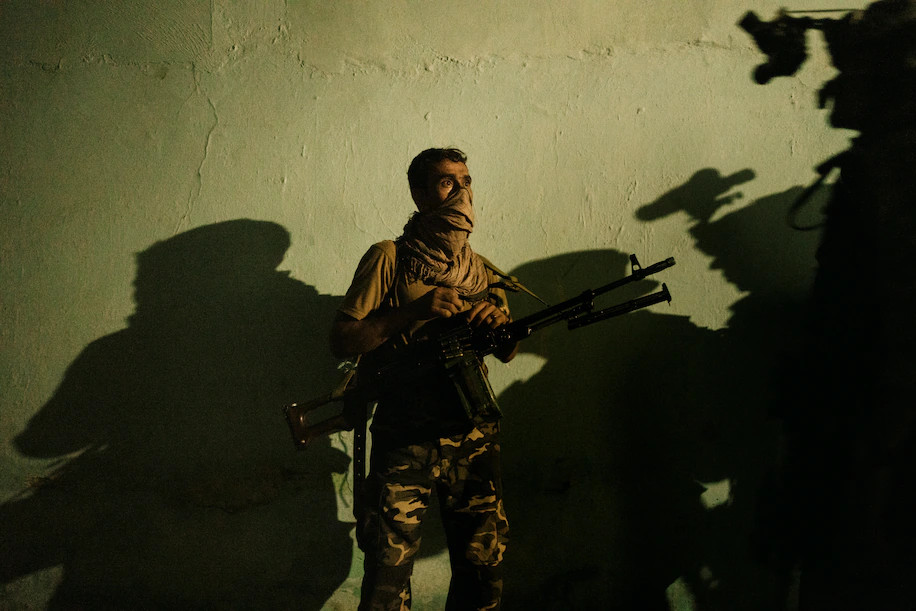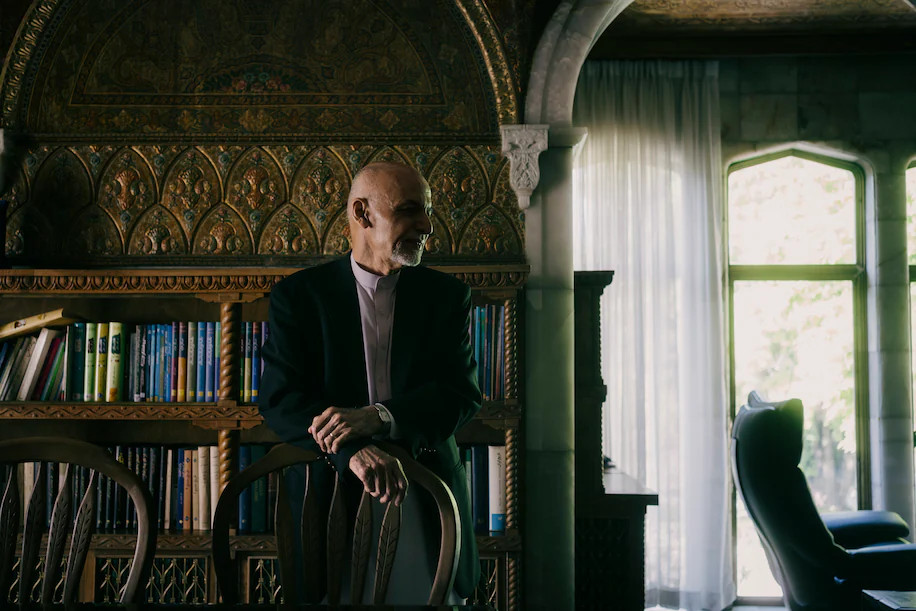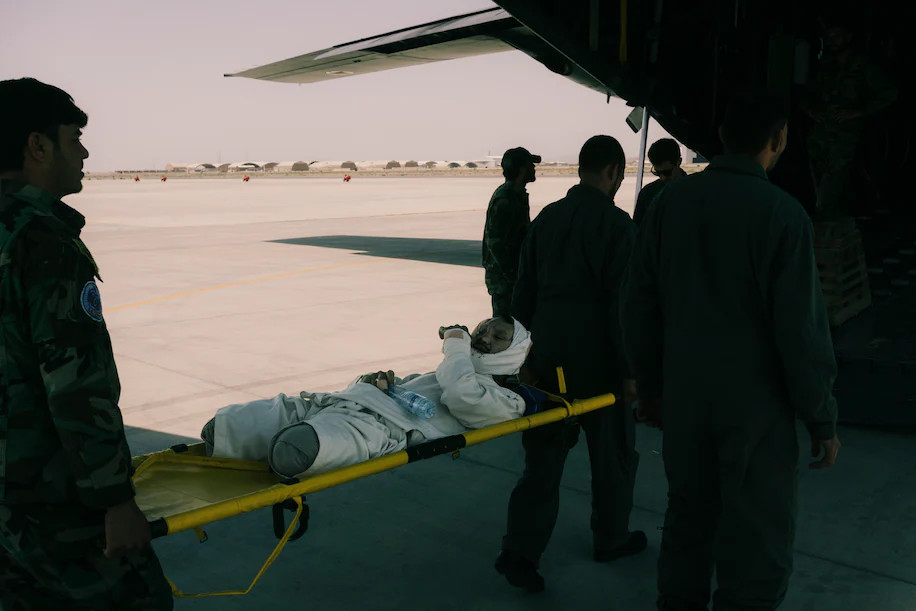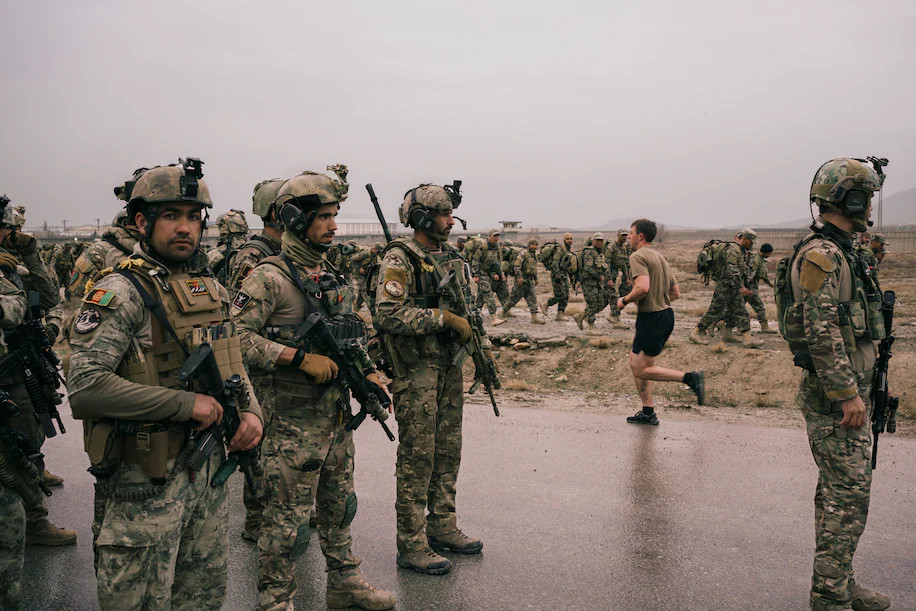
OVERVIEW
MANAGEMENT
PERFORMANCE
POSSIBILITIES
CAPITALS
ACTIVITIES
ACTORS
BURGESS
|
AFGHANISTAN
A FAILED INTERNATIONAL INTERVENTION U.S. watchdog details collapse of Afghan security forces 
Original article: https://www.washingtonpost.com/world/2022/05/18/us-watchdog-details-collapse-afghan-security-forces/ Burgess COMMENTARY I worked mainly in developing countries from 1974 to around 2000 ... a period of a little more than 25 years. I worked for corporate business organizations as an employee and as a consultant, and also worked for organizations like the World Bank, the United Nations and others doing what they could to help with economic and social development, humanitarian assistance and a whole lot more. In the corporate world, I was an effective manager and good at accomplishing profit performance improvement. When I tried to use some of the same approaches in the world of development, humanitarian assistance and government little of what worked in the private sector worked. The core foundation for management effectiveness simply does not exist. There is a reason the word 'administration' is used so much because there is little or no management. More than a century ago, the British tried to occupy Afghanistan but did not succeed. Years later I drove up the Khyber Pass from Pakistan into Afghanistan and imagined what it must have been like to fight up this gorge. I was in the region to work on a UN assignment to pull together a development plan for Afghanistan following the collapse of the Soviet Union and their withdrawal from Afhganistan. This UN project was directed by Winston Prattley, a very experienced senior UN officer who was recently retired after serving in one 'hot spot' after another. Over a period of several weeks we pulled together a draft plan for sustainable development for Afghanistan, but before we had the opportunity to present even a draft plan, the work was unceremoniously suspended. It turned out that the President of the United States, George Bush senior did not want the US to get involved, but rather to cut back and get the benefit of a 'Peace Dividend'. While our plan was not completed ... and never was completed ... it was clear that Afghanistan was faced with a lot of very difficult choices, and the active role of the international development community including money could be enormously valuable. I was reasonably optimistic that there was a foundation for success notwithstanding the existence of a range of complex issues that would not be easy to resolve. Having worked in many other parts of the world, I was well aware that Afghanistan had a multitude of tribes and different ethnic communities and getting this to work in a harmonious manner would be a challenge. There as also the issue of 'poppy' as the most profitable agricultural crop in the country ... and ... and ... and ... In world affairs, there is no such thing as a vaccuum. If there is not 'good' development. there will be something else. In the case of Afghanistan, the country became a haven for organizations like Al Quaeda and the home base for the 9/11 attacks in the United States. But the stupid saga is not over yet. Since 9/11 the United States has essentially coordinated a military operation. I do not know any development success that has come from a military strategy. Development is not delivered in the same way that a projectile is delivered ... from the barrel of a gun. Rather, development comes from a whole range of soft practices implemented in a peaceful place. This has been almost totally missing in the last 20 years, and it comes as no surprise that after all this time and money rather little is left standing. To some extent, I recognise that what I am writing is only half right. I think that if I was to work on the same project that I was working on more than 30 years ago I would find that the people of Afghanistan, especially the young people of the country are way better educated now ... especially the girls. Old men ... and I am one ... serve to constrain progress in ways that are totally unproductive and undesirable. I am not at all optimistic that the people in power understand what lessons need to be learned. Rather, I expect to hear excuse after excuse after excuse. Peter Burgess | ||
|
U.S. watchdog details collapse of Afghan security forces
By Susannah George ... Susannah George is The Washington Post's Afghanistan and Pakistan bureau chief. She previously headed the Associated Press’s Baghdad bureau and covered national security and intelligence from the AP’s Washington bureau. May 18, 2022 at 12:00 a.m. EDT Members of Afghanistan's security services regroup after an exchange of friendly fire with an Afghan National Army base in Kunduz, Afghanistan, on July 15, 2021. (Lorenzo Tugnoli for The Washington Post) ISLAMABAD, Pakistan — Paranoia riddled the most senior levels of the Afghan government, and chaos overwhelmed the country’s security forces in the days and months leading up to their collapse, according to a U.S. government watchdog report released Wednesday, one of the first since the Taliban takeover in August. The latest assessment by the Special Inspector General for Afghanistan Reconstruction, or SIGAR, examined the roots of the Afghan military’s demise at the end of America’s longest war. Many of the findings confirm previous reporting by The Washington Post and other outlets on Taliban-brokered surrender deals, but also shed new light on the intrigue and suspicion that consumed the Afghan leadership in its final days. As Taliban forces closed in on Kabul, then-president Ashraf Ghani feared his own military would turn against him and suspected the United States was plotting to remove him from power, the report reveals, quoting former Afghan and U.S. officials. Ghani also dismissed many of his senior security officials and key commanders on the ground, believing they were disloyal, moves that further undermined the morale of Afghan security forces, confused the war effort and culminated in the country’s fall, the report concluded. 
Then-president of Afghanistan Ashraf Ghani poses for a portrait in the presidential palace in Kabul in May 2021, just months before the fall of the city. (Lorenzo Tugnoli for The Washington Post) The rapid collapse of Afghanistan’s security forces, despite billions of dollars in arms and training over 20 years of war, have been central to criticism of the Biden administration’s handling of the chaotic U.S. withdrawal. The report said “the U.S. decision to withdraw military forces and contractors from Afghanistan,” despite the inability of Afghan forces to support themselves, was the most significant factor in the country’s collapse. “When the contractors pulled out, it was like we pulled all the sticks out of the Jenga pile and expected it to stay up,” former senior U.S. commander David Barno told researchers. “We built that army to run on contractor support. Without it, it can’t function. Game over.” Despite some U.S. assessments that the Afghan capital could hold off a Taliban attack for months, Kabul fell to Taliban fighters in a matter of hours in August after the city’s defenses melted away. Similar scenes played out in cities across the country. Afghan security forces said Taliban leaders had been securing negotiated surrenders many months in advance, laying the groundwork for its fighters to isolate and take control of urban centers. 
An injured member of the Afghan security forces is evacuated on a military flight from Kandahar airfield to Kabul in May 2021. (Lorenzo Tugnoli for The Washington Post) Ultimately, the majority of territory taken by the Taliban was not captured by military force, but was handed over after dealmaking with local government officials, tribal elders and Afghan military commanders. The withdrawal agreement the United States signed with the Taliban in Doha in February 2020, paired with growing Taliban success on the battlefield, was interpreted by many Afghans as “a clear sign that … the tide had turned,” the report stated. After the U.S.-Taliban deal, Ghani also began to fear there was a U.S. plot to oust him and so he began “changing commanders constantly [to] bring back some of the old-school Communist generals who [he] saw as loyal to him, instead of these American-trained young officers who he [mostly] feared,” former Afghan Gen. Sami Sadat told the watchdog. Sadat described Ghani as a “paranoid president … afraid of his own countrymen.” 
An American soldier runs near a special forces unit of the Afghan National Army during morning training in Kabul in March 2020. (Lorenzo Tugnoli for The Washington Post) Former senior Afghan government and security officials have provided similar accounts to The Post suggesting Ghani feared his own security forces would ultimately turn on him. Afghanistan’s security forces were beset by poor leadership at the top and were never trained to operate independently, the report stated. When U.S. troops departed and withdrew aerial support for government operations, the Afghan military began to falter. As the number of U.S. airstrikes dropped, Taliban forces began steadily isolating patches of government-controlled territory in Afghanistan. Afghan troops were unable to defend against the advances because the forces “never became a cohesive, substantive force capable of operating on its own,” the report said. “The U.S. and Afghan governments share in the blame,” the report concluded. “Neither side appeared to have the political commitment to doing what it would take to address the challenges.” U.S. efforts to build a self-sufficient Afghan security force “were likely to fail from the beginning,” SIGAR noted, but the decision “to commit to a rapid U.S. military withdrawal sealed the [Afghan military’s] fate.” By Susannah George ... Susannah George is The Washington Post's Afghanistan and Pakistan bureau chief. She previously headed the Associated Press’s Baghdad bureau and covered national security and intelligence from the AP’s Washington bureau. MORE FROM THE POST Doug Mastriano’s Pa. victory could give 2020 denier oversight of 2024 May 18, 2022 What is monkeypox, the rare virus now confirmed in the U.S. and Europe? May 18, 2022 Army officer who reported Trump probably faced retaliation, inquiry finds May 18, 2022 To counter Putin’s aggression in Ukraine, look to Ronald Reagan Opinion·May 18, 2022 For African Americans tired of U.S. hostility, Ghana is still calling Opinion·May 18, 2022 Are you on Telegram? Subscribe to our channel for the latest updates on Russia's war in Ukraine.
| The text being discussed is available at | https://www.washingtonpost.com/world/2022/05/18/us-watchdog-details-collapse-afghan-security-forces/ and |